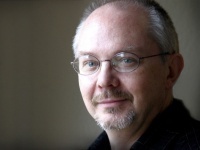c. 2008 Religion News Service
(UNDATED) “The Shack,” a novel of horror and healing that was rejected by more than a dozen publishers, has sold more than 2 million copies to become the bestselling religion book of the past year.
Author William P. Young, who goes by Paul, says he wasn’t writing for the masses but for a small circle of family and friends. But his story was so raw and powerful that it has touched thousands of readers and turned Young into a sudden, if unlikely, celebrity.
“I totally see this as a God thing,” said Young, 53, in an interview. “This is proof that God still uses the foolish. And it shows that story always has a way of reaching the heart of a person in ways that a debate or lecture doesn’t.”
“The Shack” tells the story of Mackenzie Philips, who is enjoying a family vacation when the unthinkable happens: his daughter is abducted and murdered in a nearby shack. Four years later, the grieving father receives a letter from God inviting him to spend a weekend at the shack. Mack accepts, and his understanding of God (who appears as a black woman named Papa) and forgiveness are transformed and enlarged.
The book’s success has cast a spotlight on Young’s own troubled life story _ and also raised eyebrows among some high-profile Christians about its theology.
Born to missionaries in New Guinea, Young says he was sexually and emotionally abused both by members of the local community and children at the missionary boarding school where he and other kids were housed.
After college, Young cycled through a series of jobs before facing his next big crisis. “On Jan. 4, 1994, I got a call from my wife Kim who told me she knew about my affair,” he said. Over the next 11 years, he experienced the healing and forgiveness that planted the seeds for “The Shack,” which Young sees as a metaphor for people’s secret sorrows and sins.
“The shack stands for the house of the human soul,” he said. “It is all busted up and broken by our choices, but we learn to hide all that. We build a false front on the outside of our shack, but inside we hide our addictions, our secrets, our lies and all our crap. We want people to believe in our facade, which we paint real nice. But inside everything’s a wreck.”
His wife forgave his infidelity but challenged him to write something about his journey. Young embraced the task, hoping to give the story to his children by Christmas 2005. He missed that deadline, but came back from Kinko’s in early 2006 with 15 copies of “The Shack,” which he gave to family and friends.
Before long, recipients were asking for additional copies.
Young sent the manuscript to two friends with connections to the movie and publishing industries. Over the next 16 months, the two men helped Young repair some of the novel’s literary and theological flaws.
In early 2007, they unsuccessfully pitched the book to two dozen publishers. Religious publishers said it was too iconoclastic; mainstream houses said it contained too much Jesus talk.
The two friends raised enough money to create Windblown Media and print 10,000 copies, hoping they could sell them online within two years. Within a year, they had sold a quarter million copies.
(BEGIN OPTIONAL TRIM)
Joanne Petrie, a 69-year-old grief counselor and hospice chaplain, bought and gave away nearly 100 copies of the book before her husband complained about the expense. She has since purchased hundreds more copies, which she resold to others.
“I’ve been in Christian circles forever,” says Petrie, who attends Abundant Life Church in Happy Valley, Ore., “but this book gives people a great way to look at God in a greater dimension.”
(END OPTIONAL TRIM)
Hachette Book Group USA, a major New York publisher, signed on to distribute the book in May. It debuted at No. 1 on the New York Times’ June 8 trade paperback fiction best-seller list and has stayed there ever since. Young says Oprah’s staff is now reading it.
Some evangelical leaders (such as Eugene Peterson, author of “The Message” Bible) have praised Young’s book, but others (Prison Fellowship founder Charles Colson, and Southern Baptist Theological Seminary President R. Albert Mohler Jr.) say it plays fast and loose with Scripture, and confuses key Christian doctrines such as the Trinity, forgiveness and salvation. Seattle pastor Mark Driscoll calls the book heretical.
Media scholar Lynn Clark says the book blends elements from popular books (“The Five People You Meet in Heaven” and “The Purpose-Driven Life”) and films (“Bruce Almighty” and Tyler Perry’s Medea movies) to “reassure readers that even in our culturally plural world full of conflict an old, unquestioned approach to traditional Christianity is best.”
Still, Clark is troubled by its racial stereotypes.
“The book pretends that it’s being `diverse,’ but the all its racially diverse spiritual beings serve the white guy at its center,” she said.
Young welcomes criticism but isn’t letting it slow him down.
“People have their fears about the book’s theology and stuff, and that’s OK,” says Young, who is working on a movie version of “The Shack,” blogging at http://www.windrumors.com, and thinking about writing his autobiography.
“All over the country, I meet non-religious people who have read the book, bought copies for their religious friends, and told them, `I like the God in this a lot more than yours.”’
KRE/RB END RABEY
900 words, with optional trim to 825
A photo of Young and the jacket cover for `The Shack’ are available via https://religionnews.com





